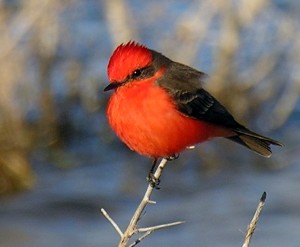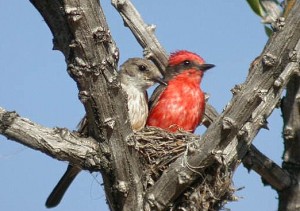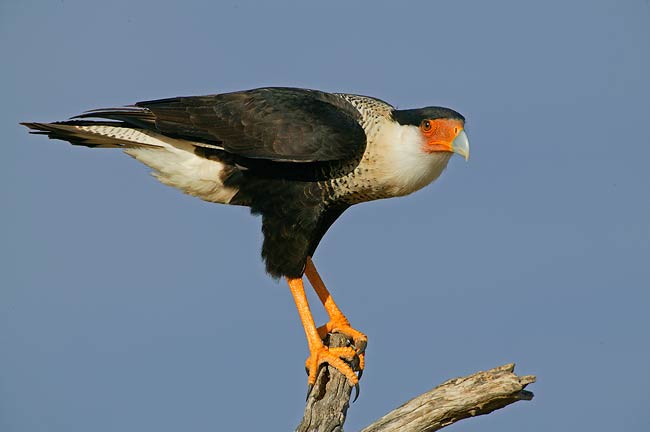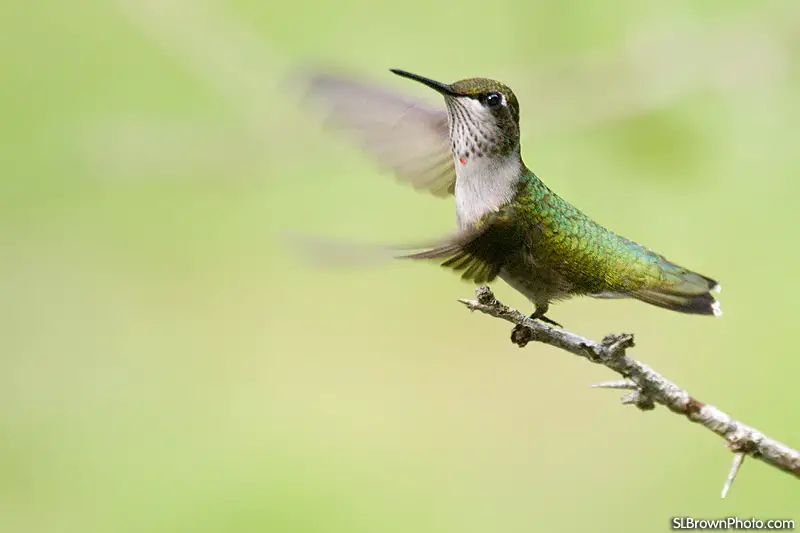Vermilion Flycatcher
Vermilion Flycatchers are one of the most beautiful birds in America. Males are ornamented with a colourful plumage, which is especially beautiful during the mating period. These birds inhabit vast territories ranging from southwestern USA, through all parts of Central America to even Bolivia and Argentina. They also live in the Galapagos Islands, and that population was initially thought to be a different species.
These birds are relatively small in size, reaching only 14-17 cm in length and about 8 centimeter wing span. Their plumage, however, is exquisite – males are vivid red, combined with dark brown, while the females are bright yellow with gray. For their spectacular appearance, Vermilion Flycatchers are popular birds, and they’re also fairly sociable and usually allow human presence near them.
Vermilion Flycatchers prefer areas near forests, open fields with bushes, usually near rivers or canals. They’re also passage birds – during the cold season they move to warmer areas and their destination depends on the original place of habitat. Interestingly, male flycatchers often sing while flying. They quickly take off with swift wing beats and flies in the air in a spiral motion until it reaches 20 metres height, in addition, singing the whole process.
This bird feeds mostly on a variety of bugs, especially small grasshoppers and flies, and in some regions even bees. The Vermilion Flycatcher sits in one spot and waits until a suitable prey passes by, after that swiftly catches it and returns to the post. The bird spends most of the day sitting at it’s selected post, waiting for flies, birds and insects to fly by, and will rarely search for prey himself. If a larger bug is caught, the bird holds it with one leg and rips it into pieces, using the beak.
The acrobatic flying, accompanied by endless singing means that Vermilion Flycatcher’s mating period has started. The ritual performed by the males is to signalize others that the territory is already taken and at the same time it attracts females. When a proper partner is found, they construct a nest, usually in tree branches. The female usually lays three eggs, and while the mother incubates the eggs, the male hunts and protects the nest from strangers. 12 days later young flycatchers are born and they develop at lightning speed, being able to fly already after 15 days. Vermilion Flycatchers lay eggs two to three times a year.
Thanks to their steady reproduction rate and invasive nature, Vermilion Flycatchers hold a steady population, with a trend of increasing. These birds are also not hunted by humans, in fact, they’re more than welcome in human populated regions, as they get rid of a variety of mosquitoes and flies, who can cause serious damage to crop fields




